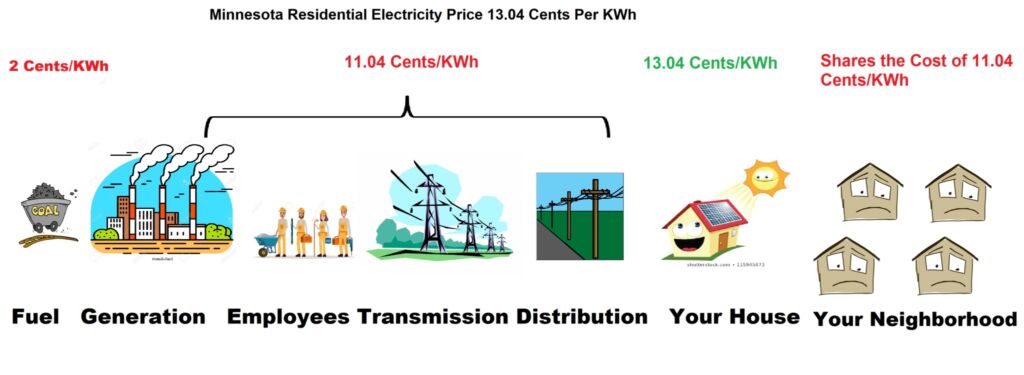California slashes cross-subsidy for rooftop solar
PV Magazine reports that the California Public Utilities Commission (CPUC) unanimously voted to change the state’s net metering program by reducing the payments for selling excess electricity back to the grid by 75 percent for new solar customers. PV Magazine reports:
Currently, average net metering rates range from $0.23 per kWh to $0.35 per kWh, and the new proposed decision cuts those rates to an average of $0.05 per kWh to $0.08 per kWh. This is set to be the largest cut of export rates in U.S. history, in a market that represents roughly 50% of the nation’s residential solar market.
What is Net Metering?
Net metering is the process of paying people with solar panels the retail rate for their power rather than the wholesale rate. As a result, the policy pays solar-panel owners more than the power is worth. As I explained on January 1, 2020:
In 2017, the retail residential electricity rate in Minnesota was 13.04 cents per kilowatt hour (KWh). This means someone with solar panels on their house would be paid the full retail cost of 13.04 cents per KWh. The problem with this arrangement, however, is that people with solar panels on their roofs are not paying their fair share to upkeep the rest of the grid, and these costs are then foisted upon people without solar panels.
While using solar power will reduce the need to burn some fuel, the cost of fuel is a tiny part of the total retail price of electricity, as you can see in the picture below.

What happened in California?
In California, the issue of cross-subsidization has come to a head because the estimated cost shift from rooftop solar customers to those who are not participating in NEM will likely exceed $5 billion when the new payment structure goes into effect in 2023.
This cost shift is a wealth transfer from low and middle income families to wealthier ones. According to a study by Lawrence Berkeley Labs, the median household income for 2021 solar adopters was $110,000, compared to $79,000 for all U.S. owner-occupied households and $63,000 for all U.S. households (including renters). In all, only 1 1 percent of residential solar facilities were in low-income communities in 2021.
The changes made in California will change the way rooftop solar facilities are compensated so the payments are more reflective of the value that those solal panels provide to the grid. This will reduce the amount of money low and middle income families are forced to pay for their electricity to cross-subsidize affluent owners of rooftop solar.